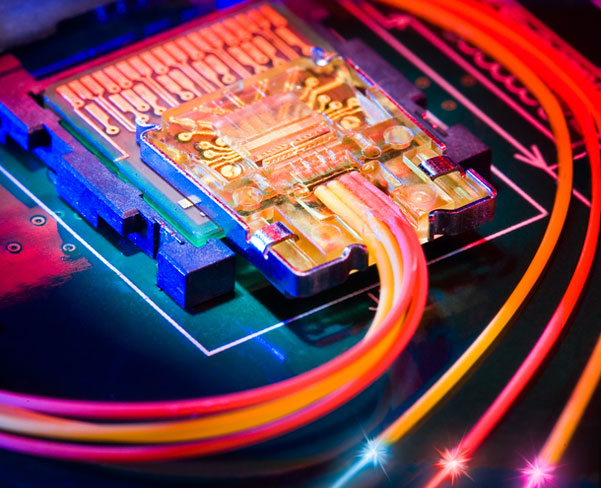Intel’s Light Peak to Light up the Connected Home
Intel is on its way to making intra-home communications between devices travel at the speed of light- literally. At this year’s developers forum they demonstrated a new fibre optic solution called Light Peak. Intel believes that with the current demand that our lifestyle and applications place on the current solutions (HDMI, Powerline Ethernet, USB, FireWire, DVI and DisplayPort) they soon will not be able to keep up. With Light Peak data will be able to travel between devices at about 10 gigabit per second – initially, then climbing up to 100 gigabit. According to Intel devices using the Light Peak technology could be on our shelves by next year – 2011.
What is Wrong with Current Technology
The use of copper cable to transfer data has done an excellent job and has continue to do so. Looking back we have moved from serial/parallel to USB, we are now at USB 3.0, and we have moved from coaxial in some areas to Ethernet. We have currently in transition from VGA to DVI and we now have HDMI and Powerline Communications/Powerline Ethernet that transfer data around the home via the power cables.

The new USB 3.0 standard offers data transfer rate of up to 5 gigabit-per-second, more than 10 times that of USB 2.0. USB 3.0 also offers a new feature; with an increase in amps from 0.5amps to 0.9amps it is able to charge and power other USB devices.
Apart from the general problem with communicating over copper cables, where it suffers from electromagnetic interference, thereby limiting the distance that cable can travel. USB 3.0 cables can only be 3M long compared to 5M for USB 2.0.
Jeff Ravencraff, President and Chair of the USB standardisation body, the USB IT Forum is quoted saying “At some point the industry is going to have to transition, I think the next transition is going to be to optics”. This is down to the inherent limit that copper wires such as those in the current USB 2.0 and USB 3.0 standards.
Why we need Light Peak
The manner in which we consume digital content is changing – and changing fast. The amount we download and store (see Cisco's digital download predictions) around our home is growing to the point where some of us are now using entry level storage devices to store our movies, photos, videos and everything digital. Also, something I have noticed is many of us don’t use DVD or Blu-ray disc. Instead we stream our movies from a local storage device or directly from the web.
Our television screens are getting bigger and are demanding better image quality. Today’s HDTVs and 3D TVs may be able to get all they need to give us a good image, but as we move to televisions with high resolution than 1080p a files sizes move into the Gigs we will need something that will allow us to transfer the data faster. Intel thinks fibre-optics-enabled Light Peak is the answer.
Intel said by adapting Light Peak technology manufacturers will be able to build thinner devices, such as laptops, tablets and other CE (consumer electronics) devices.
The Light Peak technology handles multiple communication protocols at the same time; with quality-of-service provisions to ensure high-priority traffic such as video get preferred treatment, said Jason Ziller, Intel’s director of optical input-output.
Getting Light Peak into the Connected Home
With Sony and other CE manufacturers already on board; Intel going to need more to get Light Peak into our homes. There is the issue of standardisation, buy-in from more in the CE market and pricing.
In terms of standardisation many believe it will be done through the USB-IF, and according to Steve Roux, Senior director of business development at NEC and member of the USB IF board, Light Peak is already being discussed by the USB IF board.
If the USB IF decides to integrate Light Peak into the USB standard, then it could be even smoother sailing for Intel in terms of standardisation and buy-in, and we could see Light Peak connectivity appearing on our everyday devices. Although Ziller thinks it could take several years for the Light Peak concept to win widespread acceptance, which leaves us with the question of pricing. Intel has not said how much the Light Peak cable will cost, but said it will cast more than existing cables.
Update: This technology is now called Thunderbolt. The codename had been Light Peak.